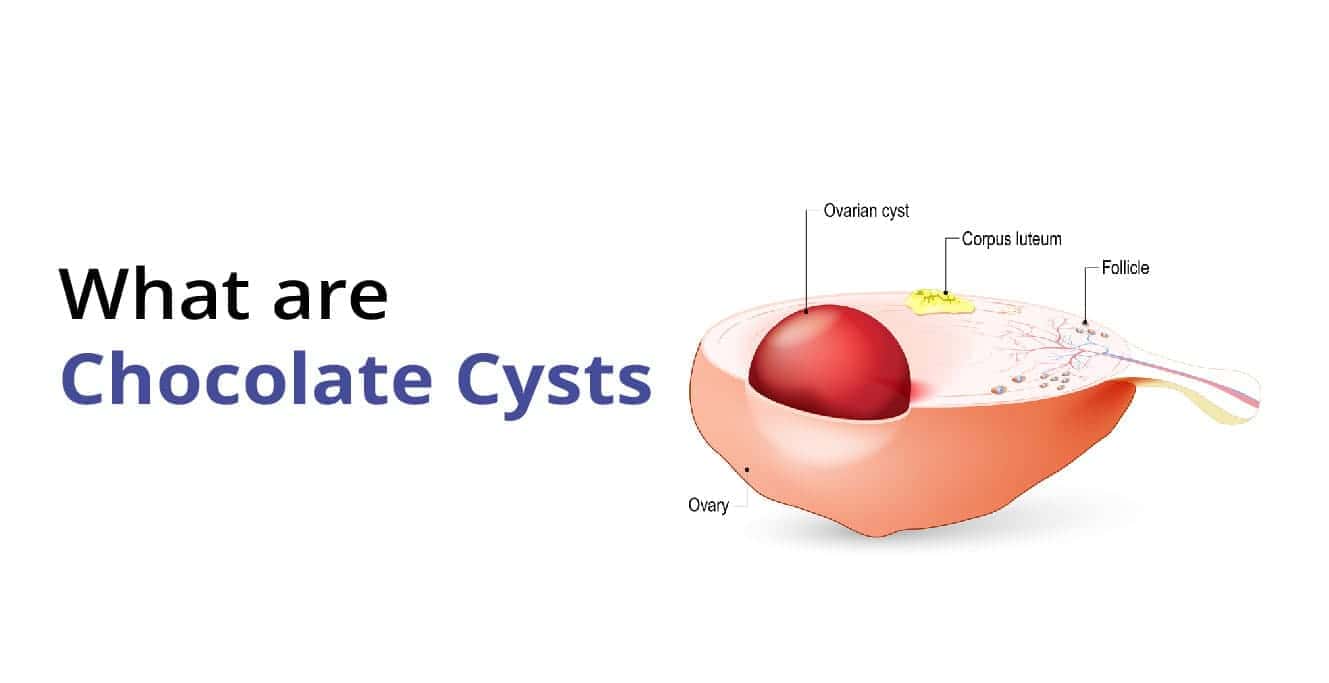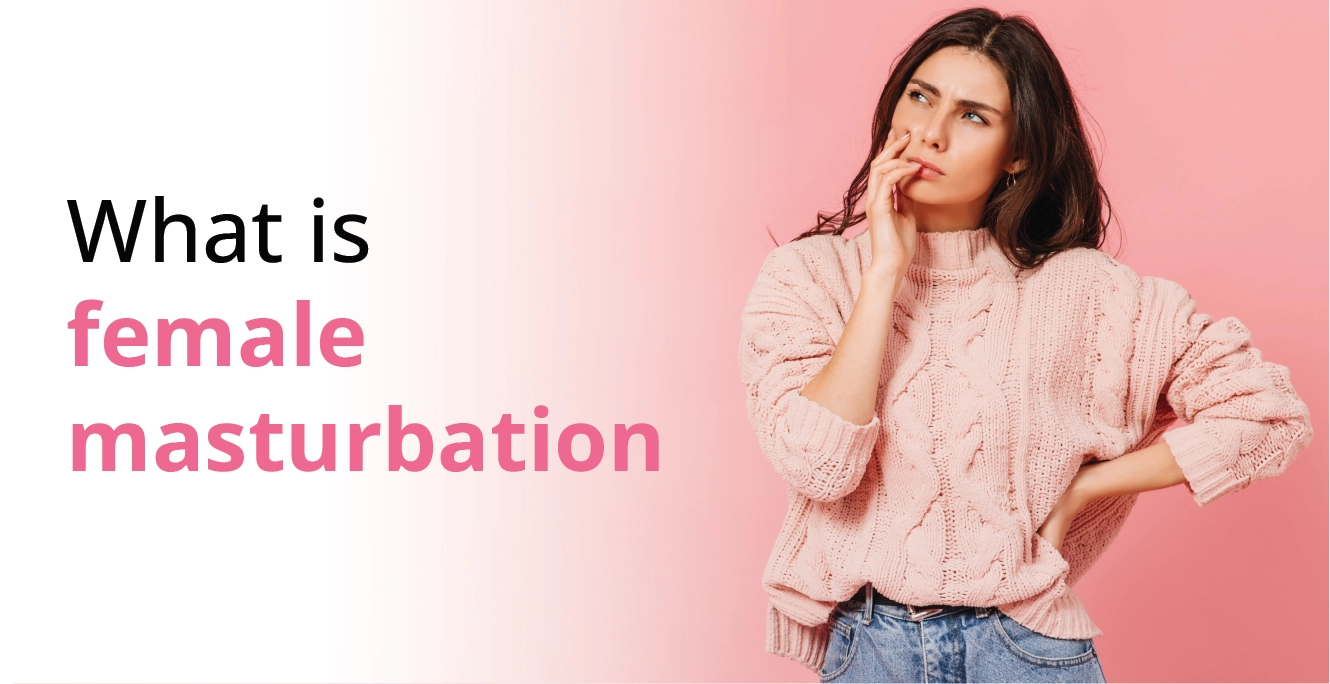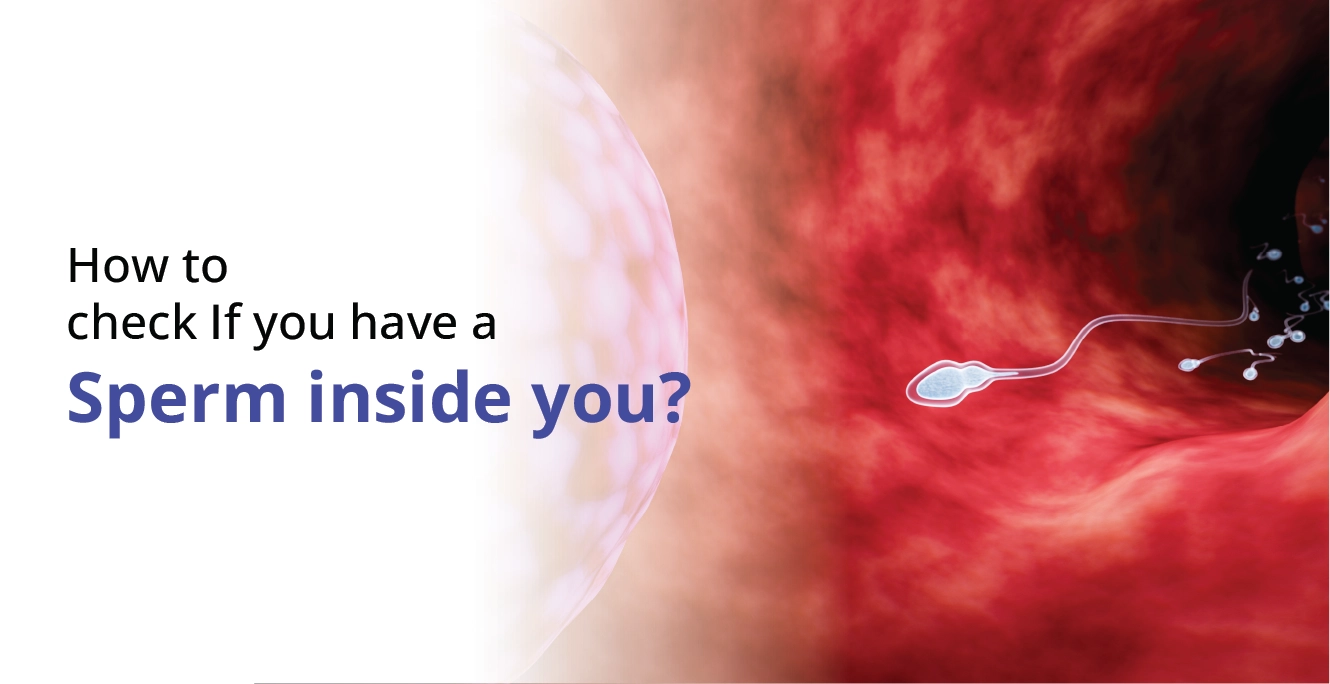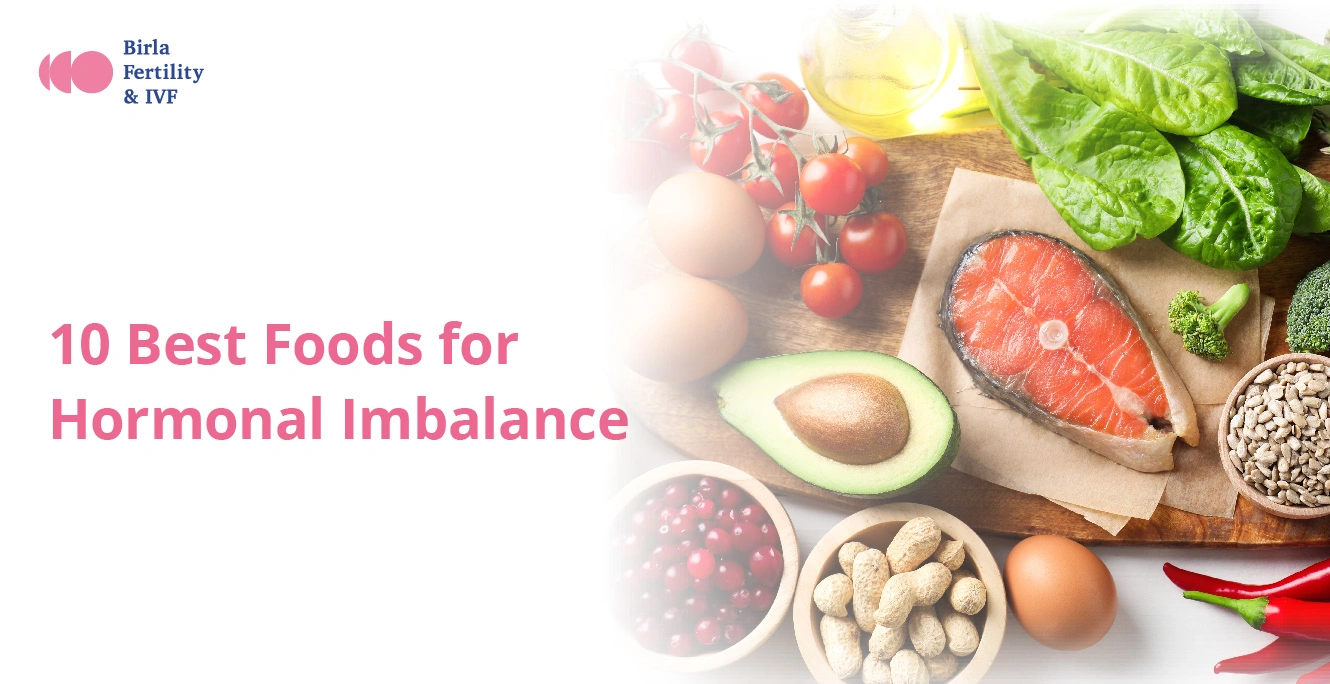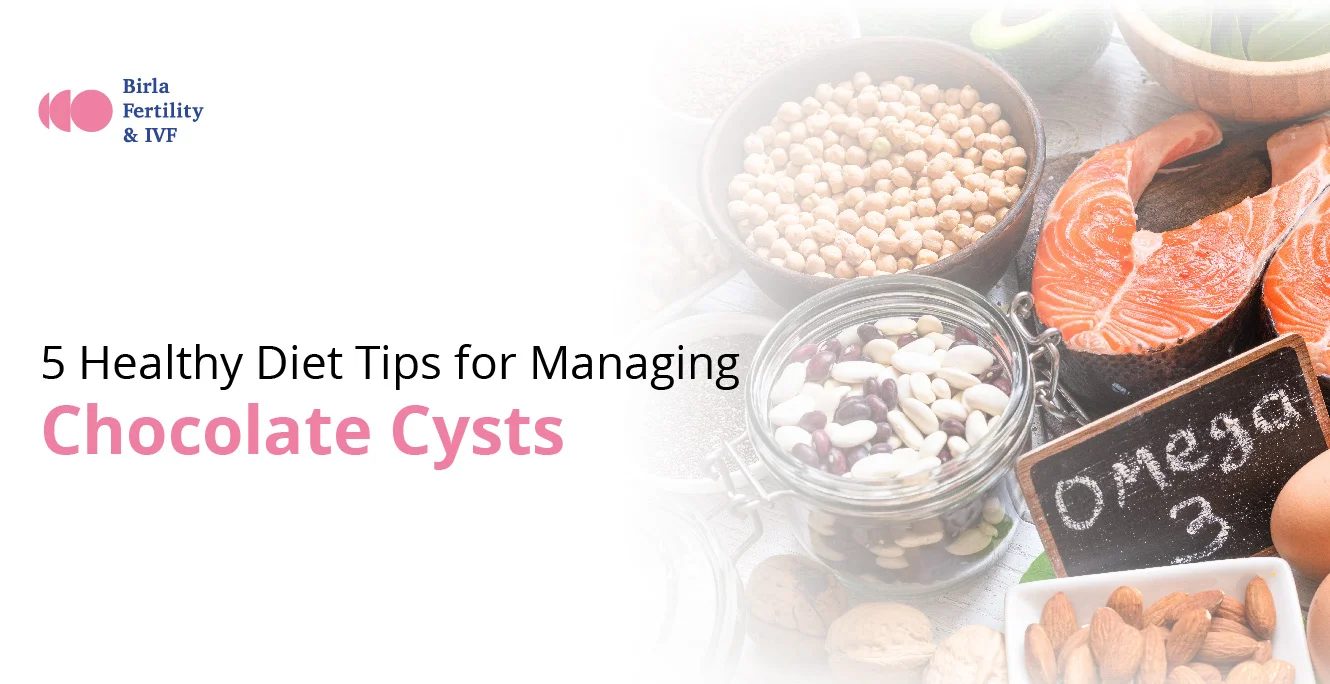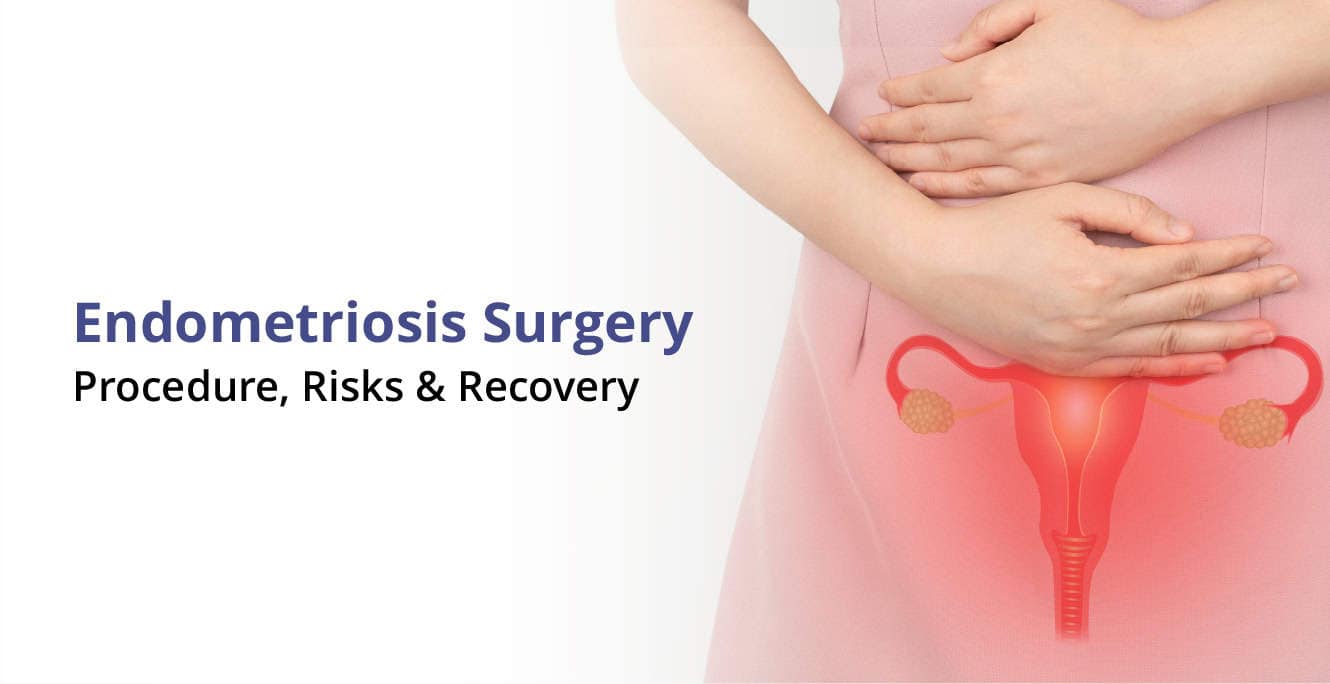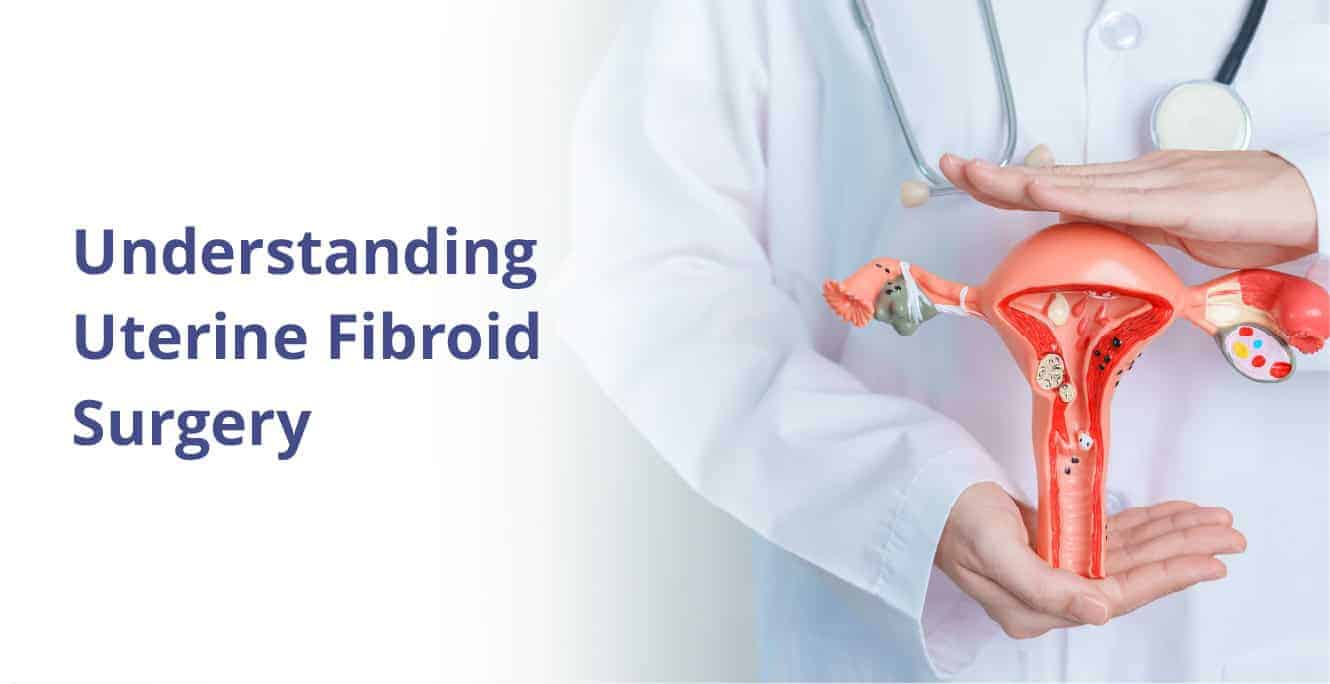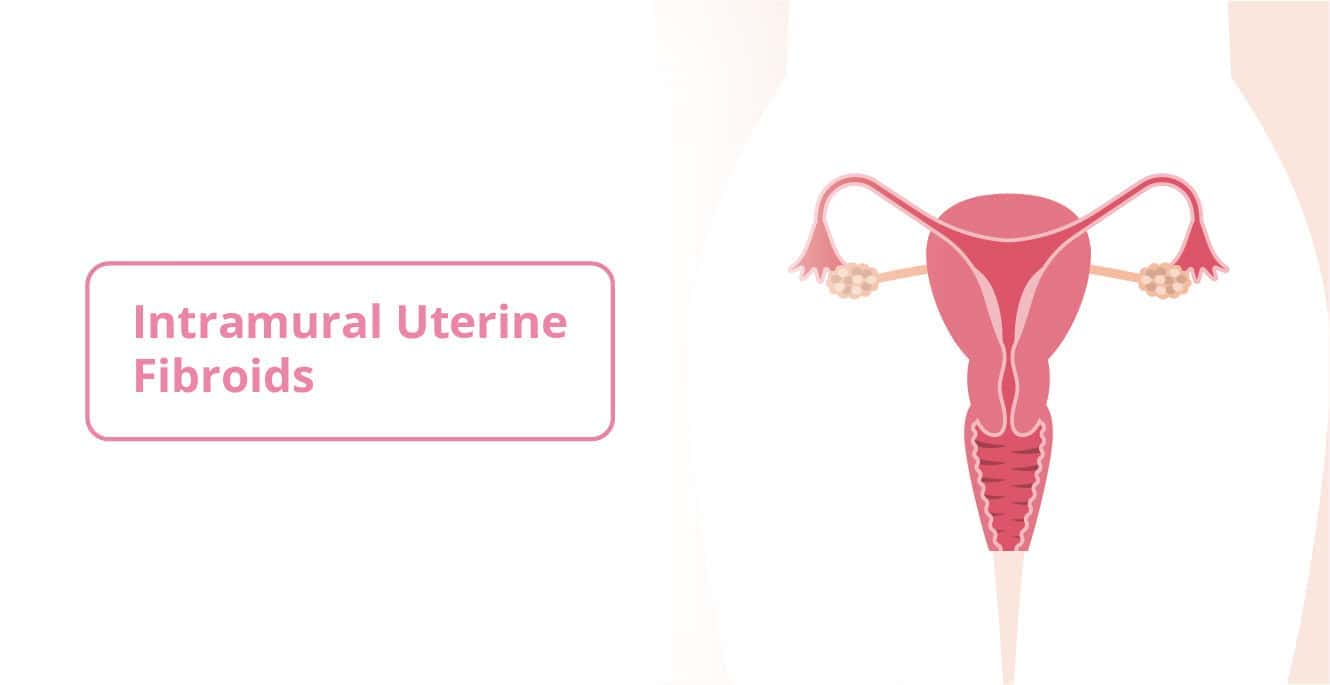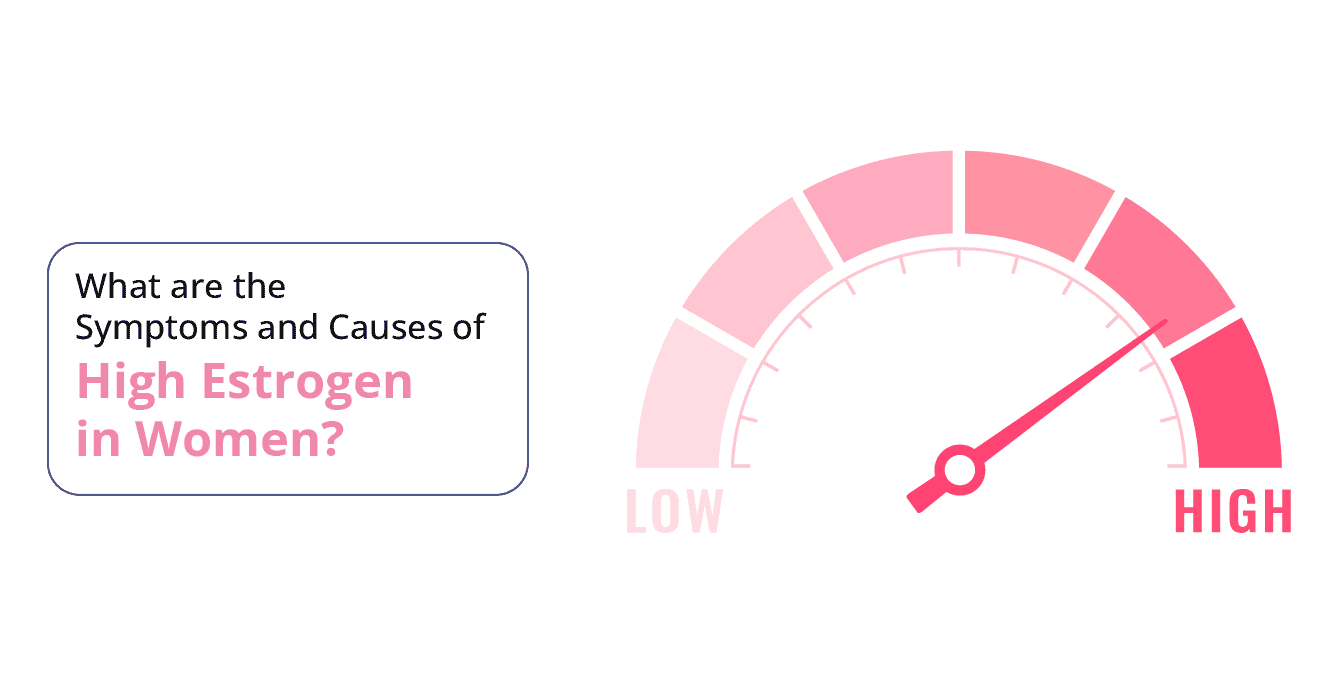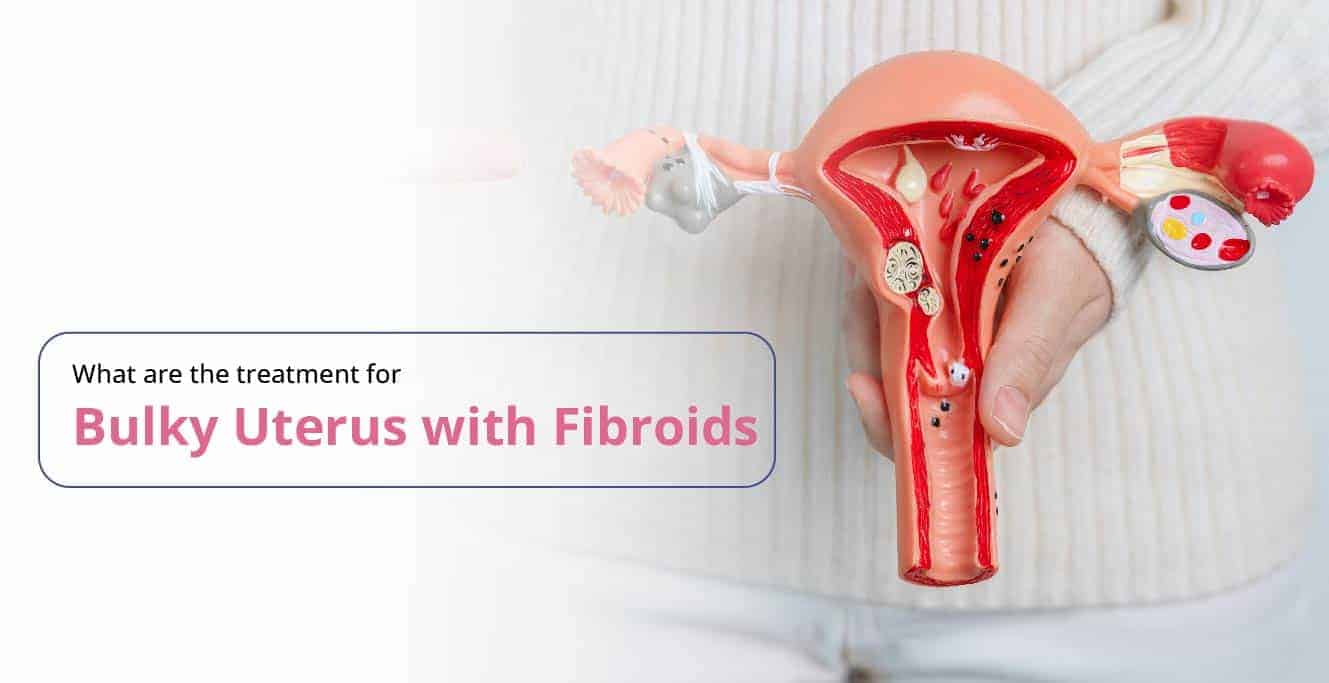What Are Chocolate Cysts?
- Chocolate cysts are sacs or pouch-like formations around the ovaries filled with fluids, mostly blood.
- Due to the accumulation of old menstrual blood, they look like chocolate-coloured, hence the name.
- These are also called endometriomas and are not cancerous. So when an endometrial tissue grows abnormally and attaches itself to the ovarian cavity, it is called a chocolate cyst.
- Initially, these are small cysts, but they multiply when triggered, mainly by hormonal imbalance.
- In case the person is not pregnant, these cysts break off and flow out from the uterus during the menstrual cycle. But if it has reached the stage of endometriosis, the blood may collect and irritate the surrounding tissues.
Size of a Chocolate Cyst – What Does it Signify?
| Size Range | Severity | Characteristics |
| < 2 cm | Mild | Often asymptomatic; may cause slight discomfort |
| 2-4 cm | Moderate | Can cause pelvic pain, especially during menstruation |
| 4-6 cm | Moderate severe | Increased risk of significant pelvic pain and heavy menstrual bleeding; may begin to affect fertility |
| >6cm | Severe | Severe pelvic pain, heavy menstrual bleeding, significant impact on ovarian function and fertility |
| >10 cm | Critical | High risk of ovarian torsion and rupture; requires immediate medical attention |
Causes of Chocolate Cysts:
It is suggested that chocolate cysts are the result of a condition called endometriosis. The significant cause of chocolate cysts forms on the ovaries due to retrograde menstruation. Here are a few causes that can result in chocolate cysts:
- Endometriomas: It is a disorder of the endometrium lining where abnormal growths occur outside the uterus. It happens when the lining starts growing over the reproductive tract, including the ovaries, fallopian tubes, and other parts. In addition, females with endometriosis experience extreme pain during their periods.
- Retrograde menstruation: In this condition, period blood doesn’t come out through the vaginal canal; instead, it starts to flow back into the uterus and transfers to the fallopian tubes and, in the end, mostly turns into the form of cysts. This is also referred to as retrograde menstruation. If left untreated, the inflammation gets worse, and chocolate cysts start growing larger in number and bigger in size.
- Genetic autoimmune disease: If the patient carries a genetic disorder, there is a higher risk of formation of chocolate cysts.
- Injury: History of any form of injury in the uterus or reproductive tract because of miscarriage or caesarean delivery.
Symptoms of Chocolate Cysts:
These cysts are not so common, but their symptoms are very common. This needs proper and timely reporting to a specialist to investigate and identify the issue correctly. These are:
- Painful menstrual cycle: Cramps and excruciating pains during PMS can be due to the obstruction faced by the chocolate cyst restricting the flow.
- Pain during sexual intercourse: By this, we do not mean the act of the intercourse is rough; rather, any attempt towards intercourse will make it painful for a woman suffering from chocolate cysts.
- Heavy bleeding or irregular flow: The chocolate cysts are causing obstruction to the menstrual blood flow and therefore leading to either excess or lowered flow.
- Heaviness of abdomen: Due to the accumulations of chocolate cysts, which already contain blood, there is a constant feeling of bloating or heaviness in the lower abdomen.
- Pain during exercise: While exercising, the pelvic muscles are also activated. This in turn creates pressure on the underlying chocolate cysts, creating shooting pains similar to period cramps while working out.
Chocolate cysts may end up causing torsion of the ovaries. By this, it means the ovaries shift from their usual location to make place for the cysts. This leads to nausea, pelvic pain, and sometimes vomiting. In extreme circumstances, a rupture in these cysts can trigger internal bleeding that would require immediate medical attention.
Treatment for Chocolate Cysts:
Whenever you are experiencing symptoms, reach out to your gynaecologist for an immediate consultation.
Imaging Tests: After going through the patient’s medical history, they will perform a pelvic examination, a transvaginal ultrasound, an X-ray, and/or a blood test. Based on the investigation’s outcome, the patient will be diagnosed with the severity of the situation.
Surgery: Smaller cysts can be diluted if they are very small. Treatment of a bigger chocolate cyst includes the removal of ovaries. This is opted in the case of older women who are not looking to conceive in the near future. Those diagnosed with larger cysts usually undergo painful periods. Based on the severity of the case and the patient’s condition, it may also have to be removed by surgery.
Medications: Your healthcare provider may suggest medications to help regulate hormonal fluctuations associated with endometriosis. Options like birth control pills, non-steroidal anti-inflammatory drugs, progesterone injections, and some painkillers can help manage symptoms and enhance your quality of life.
Tips for Chocolate Cysts Symptoms
A few tips can help you manage chocolate symptoms and may improve your overall reproductive health:
- Dietary Changes: Eating a balanced diet rich in anti-inflammatory foods, such as fruits, vegetables, and omega-3 fatty acids, can help reduce inflammation in the affected ovary.
- Exercise: Regular physical activity can help alleviate pelvic pain and improve overall well-being.
- Stress Management: Practices such as yoga, meditation, and mindfulness can help reduce stress, which can improve quality of life while managing symptoms of endometriosis.
FAQ
How Do You Know If You Have Chocolate Cysts?
Chocolate cysts are dark, small sacs of old menstrual blood that accumulate around the ovaries. These do not have any sure-shot symptoms, and sometimes the symptoms don’t even surface until the matter has become severe.
The most common signs you should be concerned about are:
- Pain in the back, obliques, and pelvic regions of the body.
- Symptoms similar to PCOS, like hirsutism, obesity, and hormonal imbalance, since there can be two conditions coexisting at the same time.
- Pain in the pelvic region during specific activities like exercise and sexual intercourse.
- Painful cramps and other discomforts during menstruation, including spotting, irregular flow, and any kind of abnormality.
It is always advisable to go for regular pelvic checking with your trusted gynaecologist in case one or more of the above happens.
How Do You Get Rid of Chocolate Cysts?
There are two ways to get rid of chocolate cysts; these depend on the following factors:
- Age of the person
- Family medical history of the person
- Fertility history of the person
- The size of the chocolate cyst
- The existing comorbidities of the person
One of the easiest ways to treat small-sized cysts is with medication. The doctors often prescribe contraceptives to regularise the periods and help the cysts flow out with regular flow and not accumulate around the ovaries.
But in case the cyst has become bigger and is creating bigger concerns that might even be suggestive of cancer, then the same must be surgically removed. But this also adds a very high risk of sterility and might even involve taking out the patient’s ovaries. If the patient is undergoing fertility treatments, then it is possible that surgery will reduce the overall effectiveness of the treatments.
Does a Chocolate Cyst Mean I Have Endometriosis?
It is very difficult to differentiate between a chocolate cyst and endometriosis since they have very similar symptoms. However, every cyst has the potential to reach endometriosis since the growth happens away from the ovaries and around it. So at best, chocolate cysts are a subset of endometriosis.
Do Chocolate Cysts Cause Spotting?
Like most ovarian cysts, chocolate cysts can also trigger uterine bleeding before or after the menstruation process. This can lead to brown vaginal discharge or spotting in the case of some women. It is not the same for everyone, and medical history is very vital to properly diagnose these cases.


